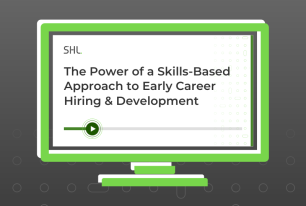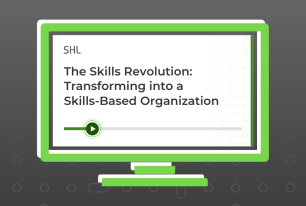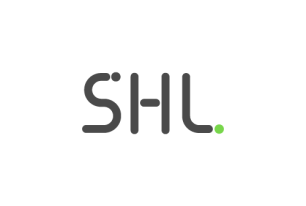How Can HR Deliver on Their People Strategy despite Challenges?
An organization's people strategy is arguably the most critical factor in achieving business success. It is also one of the most difficult to get right.
Share
In 2023, all budgets are under scrutiny as global growth is forecast to slow to a record 2.7% low and 81% of executives believe a recession is coming. Towards the end of last year and the start of this year, many organizations responded with headcount reductions, restructuring, and hiring freezes. But are these intelligent moves, based on careful forecasting and analysis? Or will they prove to be short-sighted reactions to market changes, which spark a downfall in organizational success?
In this article, we will explore the economic and business environment in which we will operate in 2023 and discuss how organizations can both effectively plan their people strategy while remaining agile in a rapidly changing world.
The forces affecting talent strategy in 2023
1. Top talent will continue to leave
Even in the toughest economic environments, top talent always has the agency to leave an organization. By their very nature, talented employees are in demand and if their internal opportunities for growth and development are limited, they will look elsewhere. In recent years we have experienced unprecedented levels of employee turnover and it is left HR in a revolving door of talent—as fast as employees are recruited, others are leaving in their droves for more opportunity, more money, and better career prospects.
It is a costly door to be stuck in, so how can organizations break the cycle and retain their talent? A good starting point is understanding why people leave, and employees state a lack of career development and advancement as the number one reason for leaving.
2. A greater focus on development, mobility, and retention
With financial pressures limiting the amount of investment in 2023, it is critical that HR respond by doing more with less. The cost of replacing employees is far higher than retaining and developing individuals already in an organization. By shifting the focus from buying in talent to building and developing individuals, HR can reap the rewards of development initiatives. Often talent or skills are bought into a business because the business does not have insight into what talent already exists. Where are the skills gaps? Where is there potential for development? Where are the strengths that can be leveraged in other areas of the business?
Understanding the talent and potential within a business facilitates targeted development, internal mobility, and critical retention of employees. And the benefits don’t just extend to filling internal roles, organizations can shift the needle when it comes to retention rates: employees at companies with high internal mobility are likely to stay with the company twice as long.
3. Increasing employee burnout
Compounding the issue of high turnover and a lack of career development in many organizations, we are also faced with significantly high levels of employee burnout. According to McKinsey, 42% of women and 35% of men in America felt burnt out over the last few months, and this is resulting in 1 in 3 women considering downshifting or leaving the workforce altogether. This is a crisis for individuals, teams, businesses, and society.
SHL research found that following the pandemic, individuals’ levels of adaptability and resilience have declined; people find it more difficult to bounce back from hardships. The research also highlighted that people are increasingly engaged and motivated by purpose and connection at work and demotivated by stressful targets and excessive workloads. As we look to the months and years ahead, managers, leaders, and HR must pivot to better engage with, and understand the people on their teams.
People are increasingly engaged and motivated by purpose and connection at work and demotivated by stressful targets and excessive workloads.
4. An employee-centric approach
Despite a deluge of redundancies and an increased number of hiring freezes put in place by businesses as we enter 2023, organizations cannot lose sight of employee needs. In recent years we have seen a power shift from organizations to employees, with more opportunities and a war for talent, employees can command certain compensation packages, work environments, and ways of working as well as being picky about the organizational culture, management, and leadership style in which they chose to work. However, as the talent landscape shifts and job vacancies reduce, it can be tempting for organizations to revert to their old ways. This is an urge that organizations must resist with the support of HR unless they want to drive lower engagement, productivity, and higher burnout and employee turnover.
Many predictions suggest that any recession is expected to be short and mild and that we could be coming out of it towards the end of 2023. A short-sighted approach to employees over the next few months could prove to be a dangerous game by the end of this year.
5. Strategic relationship between talent acquisition teams and talent management teams
There is no doubt that HR has become a strategic and key player in the C-Suite. Given the economic and financial backdrop for all organizations in 2023, it is clear that the importance of the HR function will continue to grow and alignment between the talent strategy and the wider business strategy is non-negotiable. Yet to execute a talent strategy effectively, there needs to be synchronization between talent acquisition and talent management. Alignment, collaboration, and a shared strategy between these functions allow HR to execute the people strategy effectively.
As hiring freezes sweep organizations, TA teams may well turn to TM teams to find talent in the business to fill critical gaps. As organizations take a greater focus on internal mobility and talent development, the collaboration between TA and TM to develop an effective build vs buy approach to talent becomes a necessity. In 2023, it is anticipated that TA and TM teams will work more closely, sharing information and data to create a holistic talent strategy.
6. Talent intelligence and data analytics
To be truly intelligent and agile around workforce planning and people strategy, organizations must have a clear line of sight to the talent that they have today as well as the talent they will need in the future. It is HRs responsibility to ensure that the business strategy can be delivered through their people. Like every function in a business, HR needs accurate and meaningful data to be able to do this. For example, as a business increases its global footprint, do they have leaders who can navigate across borders? If the business needs to innovate to remain competitive, do they have the talent in the business to deliver?
Setting up a successful people strategy
As we track changes and make predictions throughout this year, we are likely to see changes and surprises that have not been anticipated. With clear and accurate data on the talent in the business, HR is well-positioned to respond to change. Yet this has traditionally been a difficult nut to crack, with HR relying on inaccurate, subjective, and disparate sources of employee information. To set up for success in 2023, no matter what is thrown at us, HR needs to have an accurate, objective, and joined-up talent data to inform decision-making.
Contact us to learn how you can bring real-time data and talent analytics to all your people decisions.










